How To Properly Acclimate Snails In A New Tank?
This post may contain affiliate links.

Snails are mollusks that thrive almost anywhere globally, and they play an essential role in the ecosystem by improving soil structure and decomposing organic substances. You can keep snails in a tank or terrarium in your house as long as you acclimate them first.
To properly acclimate snails, follow these steps below:
- Bring snails home in a plastic bag
- Float the plastic bag in the tank
- Remove the water from the plastic bag
- Fill in the plastic bag with tank water
- Remove the water from the plastic bag again
- Transfer the snail
- Check on your snail
If you’re a first-time snail owner, keep reading this complete guide where we show you the step-by-step of how to acclimate snails properly. We’ll also discuss these mollusks and why acclimation is essential when introducing them to their new home. You’ll also learn the following:
- What tank size to get for your snail
- Tips on snail care
- Types of snails for your tank
Why Acclimatization Is Important to Snails?
Acclimatization is important to snails because it can reduce their stress when introduced to a new environment. It gives them a chance to learn to adapt and survive across different environmental conditions. Environmental changes could be a change in humidity, temperature, or altitude.
Acclimatization can take anywhere from several hours to several weeks. It’s essential not to confuse acclimatization for adaptation that can stretch to several generations. Different organisms acclimate differently, and researchers have yet to understand fully why certain species acclimate the way they do.
When it comes to aquatic animals like fish, they are usually kept in acclimatization bags until the process ends. You can’t put the fish directly into your water tank because they need time to adjust to water quality and temperature – the same goes for snails. Snails need to be introduced to their new environment slowly. Everything matters, from water temperature to the size of the tank.
What Will Happen if You Don’t Acclimate Your Snails?
If you don’t acclimate new snails and toss them straight into the tank at your home, you could risk killing them. It’s best to seek advice from the pet store from where you get your snails. Snails purchased at pet stores usually come in acclimatization bags which you could use later at home to acclimate your snails in their new tank.
How To Properly Acclimate Snails?
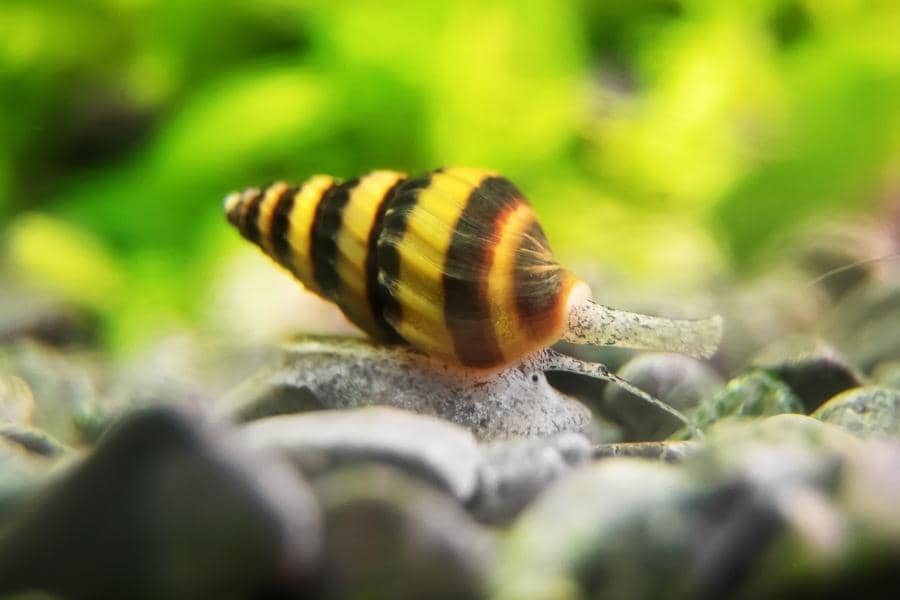
Snails are resistant creatures, but that doesn’t mean they can survive in any conditions. Acclimating snails is vital to their survival when introducing them to a new environment.
To properly acclimate snails, you will need to slowly introduce them to your tank. This involves using the water in the bag they came in and slowly replacing it with water from your tank. Going too quickly will cause them to stress out and they may not survive the transfer.
Here’s a more in-depth guide to help you acclimate your new snails properly:
#Step-1: Bring Snails Home in a Plastic Bag
Most people will purchase aquarium snails that can breathe underwater, like the Zebra Nerite snails or Horned Nerite snails. When you buy yours at the pet store, your snail seller will put the snails in a sealed plastic bag filled with water. You will use the same plastic bag to acclimate your snails, so make sure that the plastic doesn’t have tears that can cause the water to leak out.
If the plastic bag happens to leak, put the torn snail plastic bag into a new plastic bag. Tie the plastic properly and ensure the plastic bag doesn’t get shaken too much to prevent your snails from feeling stressed out.
Step-2: Float the Plastic Bag
When you arrive home, you don’t want to toss your snails directly into the tank. Instead, place the bag gently onto the tank water and let it float for 30 minutes. Your snails will be hiding in their shells, which is perfectly normal. You want to ensure the snails remain in the plastic bag because you don’t want the water temperature or quality to shock them.
Step-3: Remove Water From the Plastic Bag
After 30 minutes:
- Open the plastic bag and take out about ¼ of the water.
- Use a small measuring cup to help you do this.
- DO NOT throw the water into the tank.
You don’t want to throw the water from the plastic bag into the water tank to prevent water contamination. The water in the plastic bag and the snails may carry pathogens. Chances are you will be introducing your snails to a tank containing fish and other aquatic life, so you want to reduce the risk of anything disrupting their current ecosystem.
Step-4: Fill In the Plastic Bag With the Tank Water
After removing ¼ of water from the plastic bag containing the snails, you want to replace it with water from your tank. Seal the bag after pouring the water and wait for another 30 minutes, or up to an hour.
Step-5: Remove Water From the Plastic Again
After 30 minutes or an hour, remove water from the plastic bag again and replace it with water from the water tank. Repeat the process a few more times until the plastic bag is filled with mostly water from the tank. By doing this process, you’re giving your snails time to adjust to the new water condition.
Step-6: Transfer the Snail
Untie the plastic bag and gently take out the snails using your fingers. You only want the snails in the water tank, not the snails and the water from the plastic bag. After dropping the snails into the water tank, remove the water from the plastic bag and dispose of it.
Step-7: Check on Your Snails
After transferring your snails from the plastic bag to the water tank, they’ll likely still be in their shells. Give them time to come out but know that this can take days. After a few days, check to see if they are moving to ensure they’ve survived the trip.
If you have Cowries or Turban snails, you want to ensure you position them properly. When they are stressed out, they cannot flip themselves over, so you may have to assist them. Please do this as soon as you drop them into the tank to ensure their survival.
Introducing Land Snails to a Terrarium
Land or terrestrial snails are easy to care for, and you can find them in your back garden. Common land snails are the Brown garden snails, Milk snails, and Burgundy snails. If you are bringing land snails back to your terrarium, you need to ensure that the conditions are suitable.
You will need a container made of glass or plastic big enough to house your land snails. The container must have a secure lid to prevent the snails from escaping, a water bowl, food bowl, substrate, and a hideout for the snail. The terrarium doesn’t need to have lights.
Make sure the substrate is deep enough for your land snails as they will want to bury themselves “underground.” You can get substrate from your local pet store.
How To Set Up a New Tank for Snails?
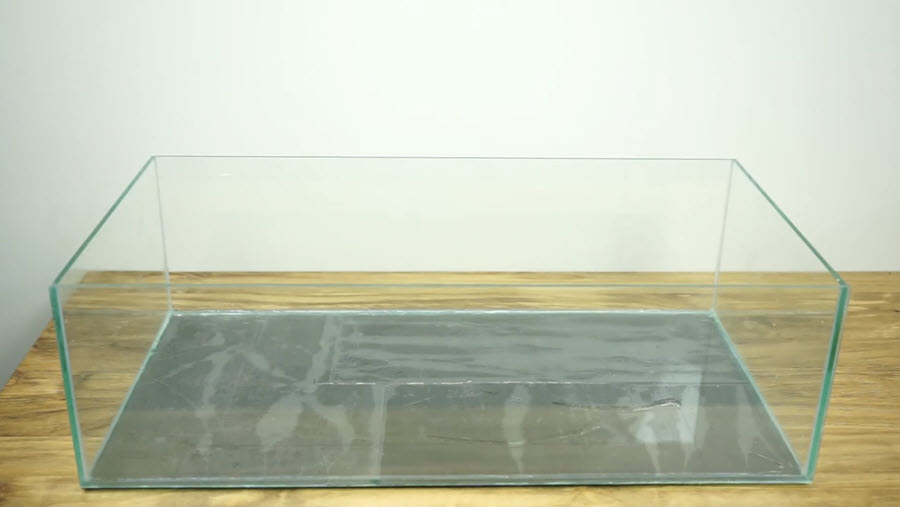
Most snail owners are aquatic snail owners. If you plan on giving your snails a new tank, keep reading. Follow this guide on how to set up a new tank for your little snails.
The size of your tank depends on how many snails you plan on keeping in the tank. A 2-gallon (7.57-liter) tank works fine if you only have a few snails. Follow these steps on setting up a new tank for your snails:
- Prepare your Primer to prime your water. Always prime your water, be it to put snails into the tank along with other animals such as shrimps and fish, changing or topping up the water, etc. You can use Seachem Prime or any primer of your choice.
- Get ready some stones or rocks for your tank. Small, fine rocks would be great. Make sure the small rocks are enough to cover the tank surface.
- Use a tank decoration. You can use a fake branch or plants, but do add real plants as well, so your tank decoration will look more realistic. Snails love to hide in rocks and hang around moss balls, so it would be great if you could add a rock hide and a moss ball to your tank.
- Get ready snail food for your snails. You can use tropical fish food to feed your snails, such as the Fluval Bug Bites Tropical Fish Food. Once the tank is ready, you want to sprinkle the fish food on the water, and the snails will eat it once it has decayed.
- Rinse your new tank with water. It’s always a good practice to rinse your tank before adding a fish to it or changing your tank decorations. After a quick rinse, add some water to the tank, about ⅓ of the tank.
- Pour the rocks into the tank. The rocks should properly cover the tank surface. Then, add your tank decorations.
- Add a filter to your tank. You may want to get a foam cover for your filter intake if you have a strong filter. Strong filters can sometimes such up snails, so you want to prevent this by using a foam cover. You also want to add the cartridge that comes with your tank filter to your filter.
- Place the filter accordingly. Then, add more water to your water tank. Add 5 drops of prime to your tank water.
- Add snails to your tank. Drop them into the water gently, and sprinkle some fish food onto the tank water.
- Turn on your tank’s LED lighting. You also want to turn on your tank filter. Enjoy your new tank!
If you’re bringing home new snails from the pet store, refer back to the plastic bag method we’ve mentioned earlier. Before you drop your snails into the tank water, ensure that the water’s pH level is suitable for the snails. Snails like living in pH water between 7 and 8, and temperatures around 65–83°F (18.33–28.33°C).
To test your tank’s water pH, use an electronic pH meter. You can easily buy the device online.
You can use an airstone to check your water pH. Drop an airstone into your water tank. Leave the water tank alone for the next 48 hours.
Adding Fish to the Tank
After setting up your tank, you might also want to add fish to the tank. That’s fine, but you don’t want fish that may pose danger to your snails. Consider adding Tetras and Guppies to your tank — they will leave the snails alone.
How To Ensure Your Acclimated Snails Survival?

Many people are left wondering what could have caused their newly bought snails to die upon introducing their new tank. The introduction period is just as crucial as the caring period because if you don’t maintain a healthy environment for your snails, they can die. It’s not always easy to determine what could have caused a snail’s death – different factors can lead them to their death.
To care for your snails, always be sure to take acclimatization slowly, giving them a chance to get used to their new environment. Check the level of the tank’s alkalinity, ensuring it is around 7.5 pH and provide your snails with an environment rich with oxygen to keep them happy. Never let your snails share a tank with aggressive tankmates.
Don’t Encourage Too Much Breeding
Snails are scavengers, and they will keep your tank clean of algae, dead plants, or fish food, but too much food can cause the snails to breed quicker, which can be harmful to the other fish in the tank. Fortunately, you can ensure that your snails do not become a threat to your other aquatic animals as long as you care for the snails properly.
Leave a gap of a few inches below the tank cover if you wish for your snails to lay eggs.
Have Snail-Friendly Tank Mates
Make sure the other fish in the tank are snail-friendly, like Tetras, Guppies, White Cloud minnows, or danios. Other than snail-friendly fish, snails can also get along with Amano shrimp or Cherry shrimp.
If you want your snails to live with other gastropods, try getting Nerite snails, Ivory snails, Assassin snails, or Ramshorn snails. When mixing snails with other aquatic animals, always keep in mind what can potentially harm them, so avoid fish like Clown loaches, angelfish, or puffers.
Feed Your Snails at Night
Since snails are more active in the dark, consider feeding your snails fish food at night or when the lights are off. You don’t want to provide the snails too much food, so if you see leftovers the next day, reduce the food amount. However, if they eat quickly or munch on your live plants, increase their food amount.
Keep an Eye on Their Shells
If you have Nerite snails, you want to check on the size of their shells. A snail’s shell can become stunted if the snail doesn’t eat enough or lives at a too low temperature. A Nerite snail’s shell may also become discolored if the snail is underfed.
Calcium is essential to keep their shells strong. The lack of calcium can cause a snail’s shell to become weak and crack. You also want to check out for white spots on the snail’s shells because those white spots could be parasites.
Provide a Habitat That Is Familiar
If you have rabbit snails, give them a home that mimics their natural habitat. Rabbit snails like lush water, so you want to provide them with a sand substrate that allows them to burrow and hide. Avoid using Java Fern because rabbit snails have been known to eat it (only when they are not fed enough).
Caring for Terrestrial Snails
All snails need food, water, and calcium for a strong shell and a healthy environment. When caring for land snails, feed them once a day. You want to make sure that you remove any food that your snails don’t finish before the food decomposes.
You can feed your land snails fruits and vegetables. Before feeding the snails, make sure you clean the food first and don’t give the snails highly acidic fruits. Don’t forget to give the snails dechlorinated water to keep them hydrated, and make sure the bowl of water is shallow to prevent the snails from drowning.
Always keep the terrarium moist and clean. You don’t want to use chemicals when cleaning the terrarium as they are toxic to the snails. Gently wipe the terrarium walls and lids using dechlorinated water and remove any debris from the terrarium. You can use antibacterial dish soap to clean the water and food bowls and don’t forget to wipe clean the decorations in the terrarium as well.
Clean your terrarium regularly, at least once a week, and do check your decorations. It’s best to avoid dangerous decorations that can cause your snails to fall and break their shell.
You don’t want to keep more than one snail if you don’t want them to breed. Snails are hermaphroditic, which means they can mate with another snail of the same sex and produce babies. Land snails can reproduce quickly, as many as 86 eggs at a time, provided the conditions are right.
What Are The Types of Aquarium Snails?
It’s important that you choose the right snails for your tank. Once you have acclimated them, you should be able to see the snails moving around the tank. Keep an eye on your snails because they can reproduce quickly, end up eating all your aquatic plants, and cause an increase in waste and higher ammonia levels.
Too many snails can lead to overcrowding in the fish tank, and this can cause diseases or death to your other aquatic pets. Sometimes aquarium snails can accidentally get into the tank filter, which is terrible for them and your filter (unless it’s a sponge filter). All the problems can occur if your snail population is out of control, but not all snails reproduce quickly.
Besides, snails can help keep your algae control in check. If you are not sure what snail type to get for your tank, you’re in luck. Let’s explore some popular snail types you may want to consider for your tank.
Nerite Snails
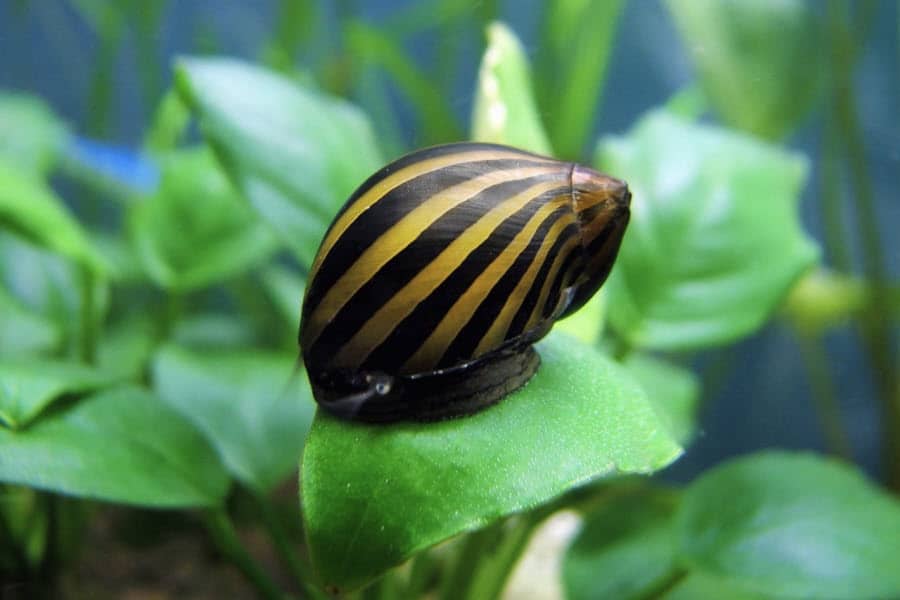
Nerite snails are very popular among snail owners. They’re cute, and they keep your tank clean, whether it’s freshwater or saltwater. Nerite snails don’t remove your algae entirely, but their help in keeping your algae in control is helpful.
If you want your Nerite snails to help you tackle your algae problem more effectively, try keeping a few of them in the tank. You want to make sure there are no holes on your tank lid to prevent the snails from escaping, as they will try to escape when the water condition isn’t good. Nerite snails can live between one and two years.
These snails are peaceful and won’t bother their tankmates. They can, however, fall prey to certain fish types, so you want to avoid fish that can be harmful to them. It’s fun watching Nerite snails as they always keep themselves busy cleaning algae.
Nerite snails come in many different stripe patterns. Despite the different shell patterns, all Nerite snails have the same basic shape and structure. The different patterns of Nerite snails are:
- Zebra
- Olive
- Tiger
- Horned
Nerite snails eat using their sensory tentacles and radula. They eat algae, but you can also give them algae wafers. Alternatively, you can also give them green vegetables, such as lettuce or spinach, but only give them extra food when the algae they feed on aren’t enough.
Since Zebra nerite snails do not reproduce in freshwater, you won’t have to worry about your snails multiplying and becoming potential pests. Even if the snails can lay fertile eggs, the eggs won’t hatch because they need to be in brackish water. Zebra nerite snails will be happy living in a tank with a minimum of 10-gallon water, with temperatures between 72° and 78°F and pH levels between 7.5 and 8.5.
Mystery Snails
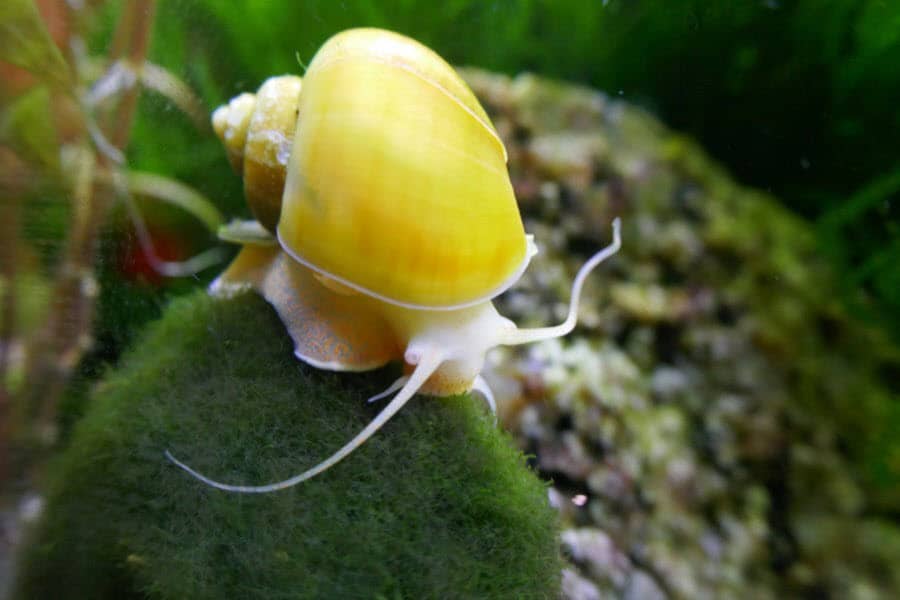
Mystery snails are also a popular snail type for aquariums. The snails come in different colors: white, red, blue, brown, black, etc. The shape of their shells is round.
When you have male and female mystery snails, they can reproduce quickly. Fortunately, you can control your snails’ numbers since it’s easy to spot the eggs (they are pink in color and will float). Just scoop the eggs out of the water and get rid of them.
Compared to Nerite snails, Mystery snails don’t clean as much algae. On the bright side, Mystery snails are excellent for finishing up leftovers from your fish. Mystery snails are peaceful snails, so they’ll be a great addition to your fish tank.
Keep your Mystery snails in a tank with at least five gallons of water. The snails will be comfortable in a tank with temperatures between 68°-82°F. You want to ensure that your tank’s pH levels are suitable for the snails, between 7.5-8.5.
Related:
Rabbit Snails
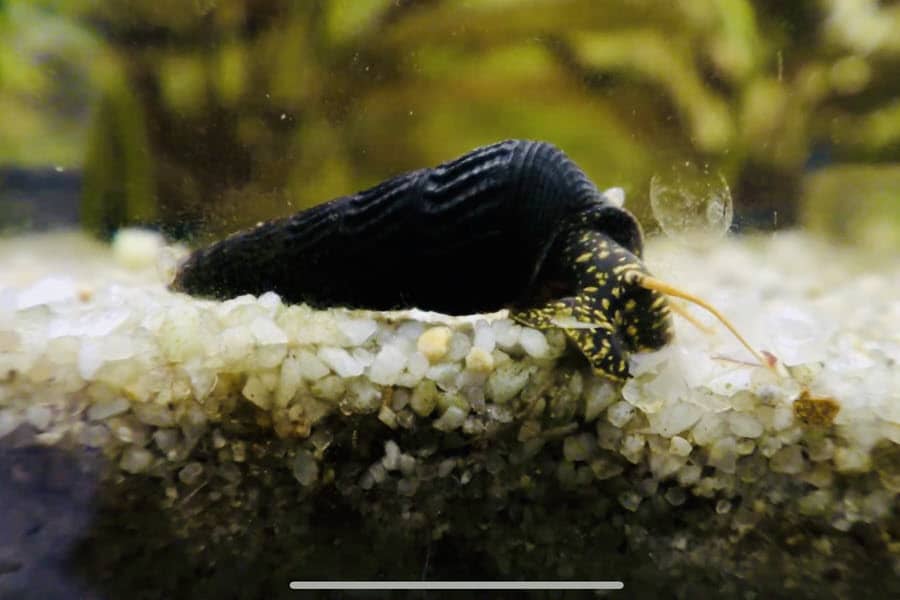
Rabbit snails, also known as Elephant snails, come in different sizes and colors, but they all have one thing in common: their shells are twisted conical. The snails originated from Sulawesi, Indonesia. There are several types of rabbit snails, with most of them having similar care requirements.
It’s easy to care for rabbit snails, and you don’t have to worry about them breeding rapidly. However, you want to keep only one rabbit snail if you don’t wish to get rabbit snail babies. In the aquarium, rabbit snails can live between one and three years.
Rabbit snails typically feed on algae or fish food leftovers and are less likely to feed on aquatic plants, so you’ll have a clean aquarium, and you don’t have to worry about your snails eating your plants. You can provide your rabbit snails with blanched vegetables, too. The best temperatures for rabbit snails are between 74°-84°F, and it’s best to keep the snails in a 10-gallon tank with pH levels between 7.5 and 8.5.
Things To Remember About Snails
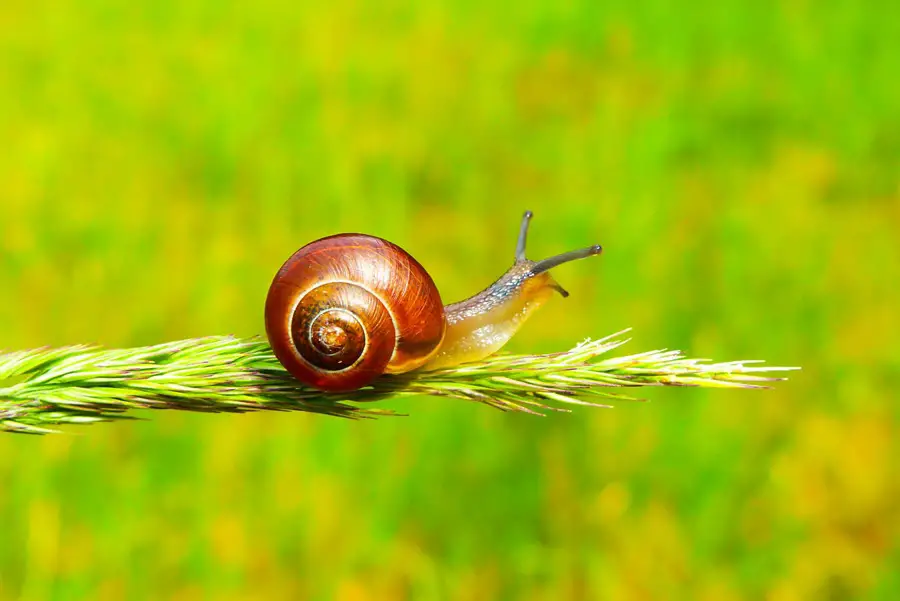
It’s common to see snails in your garden after the rain. These shelled gastropods thrive in damp or wet places, so they can often be found near the water, on soil, or under rocks. Snails can reproduce very fast, so they’re usually pests to farmers.
Snails can live almost anywhere in the world and are very adaptable to new climates. However, they can be quite sensitive to light and touch and are often stressed by sudden changes in their environment. They can live anywhere between one and 25 years, depending on the species.
While some people are creeped out by these slimy creatures, some turn them into pets. Snails are friendly, and they’re very entertaining to watch. It’s easy to care for snails as long as you know what they need to be happy.
There are many types of snails in the world, with land snails being the most common. While it’s fun having a pet snail, it’s crucial to care for your snail responsibly if you decide to keep one. Like the Giant African land snails, many snails are invasive and can cause ecological and economic damage or harm one’s health.
Snails Are Highly Adaptable
Snails are amazing creatures that can be found all over the world, even in deserts. You might be thinking: how is that possible considering snails lose a lot of water when producing mucus, and have to replenish the lost moisture to continue to survive? Thanks to microhabitat choices and the ability to produce mucus that cannot quickly evaporate, snails can cope with arid places such as the desert.
These snails try their best to stay wherever it is cool or damp and they’re nocturnal creatures, so they prefer someplace they can hide from sunlight. If it’s too dry outside, some snails will choose a place they can stick to and secure their shell entrance using their slime, like plant stems.
These slimy creatures are slow, although studies have shown that snails move faster than we thought. Still, snails are so slow that the chances of them meeting potential mates are also relatively low. Fortunately, snails are usually androgynous and can reproduce with any other snail of the same species.
Snails Are Sensitive to Touch and Sunlight
Snails have eyes, but their eye locations may vary by snail type. For example, the Burgundy snail has two long feelers where their eyes are, specifically on the end of their feelers. Snails have cells around their bodies that make them sensitive to light, enabling them to detect any threat, such as a predator.
If you touch a snail, the snail will likely retreat into its shell. Whenever a snail faces a challenge, its feelers will correspond with the snail’s muscles that quickly retract the snail’s body. However, if you touch the snail gently enough, it won’t retreat at all.
Snails Are Sensitive to Environment Changes
While it’s undeniable that snails are highly adaptable creatures, changes in water and temperature can put them in danger. If you don’t change your tank water where your snails live regularly, the water can become toxic to the snails. The increase of ammonia, for example, could kill your snails as well as the fish you keep with them.
Snails can get stressed out by the changes in their environment which is why, when bringing them home, you need to acclimate them first. Otherwise, the snails could fall ill, and die. Snails can become stressed out when placed in an overcrowded environment or anywhere low in calcium. Even if you’ve trained your snails to breathe underwater, they might forget this and come up to take up air if you place them in a tank that is unfamiliar.
Life Expectancy
Snails can live for a long time, up to 25 years, or only 2-3 years, depending on the species and habitat. Most snails that live in aquariums can live for 1-2 years, even longer depending on the tank conditions. Tanks with higher temperatures can cause a snail’s metabolism to speed up, causing the snail’s life cycle to move at a faster rate, hence a shorter life span.
Remember, the higher the temperature in your tank, the shorter your snail’s life will be. Snails can live in water temperatures between 65℉ and 82℉, but they’ll live longer in temperatures closer to the lower end of the scale. You don’t want your water to get below 50℉ as this can kill the snails within days.
Final Thoughts
Snails are great little creatures that deserve some love. While certain snails can reproduce quickly and become pests, there are ways to control their population. Not everyone views snails as pests, and when used correctly, not only will they become entertaining companions, but they’ll also help you clean your aquarium.
It’s important to acclimate snails, mainly aquatic snails, to reduce their stress level when their environment changes. If you prefer terrestrial snails, give them a good, safe, and clean terrarium. Only keep one snail if you don’t want your snails to multiply.
